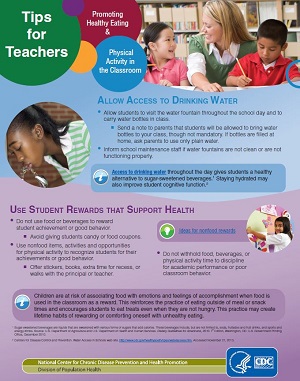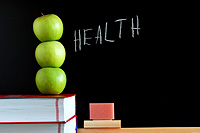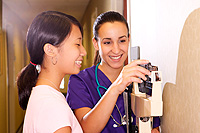School Health Guidelines
CDC integrated research and best practices related to promoting healthy eating and physical activity in schools, culminating in the School Health Guidelines. There are 9 School Health Guidelines that serve as the foundation for developing, implementing, and evaluating school-based healthy eating and physical activity policies and practices for students.

Executive Summarypdf icon [PDF – 5.09 MB]
Complete Guidelinespdf icon [PDF – 973.44 KB]
Tips for Teacherspdf icon [PDF – 548 KB]
School Health Guidelines At a Glance

Tips for Teacherspdf icon [PDF – 548 KB]
Tips and resources for teachers to promote healthy eating and physical activity in the classroom.
2015–2020 Dietary Guidelines for Americansexternal icon
Science-based recommendations to help people aged 2 years or older implement good dietary habits that can promote health and reduce the risk for major chronic diseases.
Physical Activity Guidelines for Americans, 2nd editionexternal icon
Science-based recommendations to help people aged 6 years or older improve their health through physical activity.
Healthy People 2020 Topics and Objectivesexternal icon
Science-based, 10-year objectives for improving the health of Americans.









